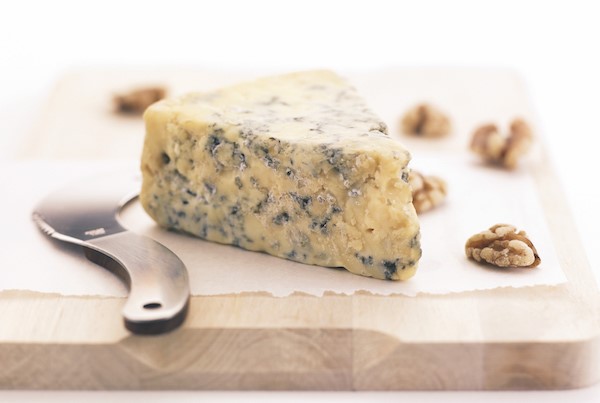Description
Blue cheeses are a form of soft ripened cheese that have either been inoculated or natural mold has grown within the cheese. Sounds delicious, right? Well, actually, it's pretty fantastic.
How It's Made
The promotion of mold on the inside of the cheese is done by piercing the cheese with long needles to create air passages that allow mold to grow. That's why you see blue veins throughout the cheese.
The Salt

Blue cheeses often have a salty bite. That's because salt is added to act as a preservative and keep any bad bacteria from growing. It's also why blue cheeses taste amazing with sweet wines or when drizzled with honey. It's the salty-sweet match made in heaven.
Age Matters
How long blue cheese ages makes a big difference in the outcome. The longer it ages, the drier it gets. For example, a Gorgonzola Dolce is aged for about two months, and is very creamy; whereas Gorgonzola Piccante is aged for six months, making it more crumbly.
Related Content, Side Dish
Blue Cheese Roasted Smashed PotatoesThey Like It Cold
Blue cheeses like to be kept cold, at around 38 to 42 degrees F. In other words, keep them in the back of the fridge away from the door.
A Range of Flavors
Different types of blue cheese are made with different milks and different techniques. Roquefort, for example, is traditionally made with sheep's milk and aged in caves, where it picks up elements of the minerals in the caves. Gorgonzola, which is primarily made in Italy, is made with cow's milk and can range from creamy to crumbly, depending on how long it's aged. Stilton is made in England using local milk and is never pressed, giving it a more flakey texture. In the United States, Maytag Blue and Point Reyes Bay Blue are household names for cow's milk blue cheese.
Ask your Hy-Vee cheese specialist about the different types of blue available.

